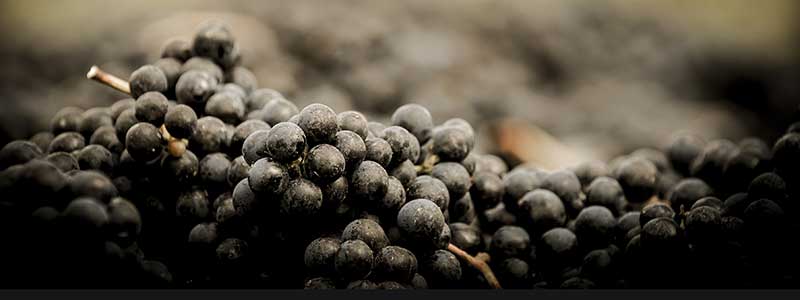
Time of maturation & about freedom in viticulture
Romana Echensberger MW has written a book about biodynamics. Contents are twelve winegrower portraits and among other things a treatise about the different production methods in the vineyard. And this is what this book is about.
Echensperger, Romana (2020): The freedom to make the right wine. A portrait of biodynamic winemaking. Frankfurt: Westend. (Published in German only)
September 2020
Quicktranslation with DeepL
It is the time of the harvest. The winegrowers and their teams are out in the vineyards and at the wine press. During these weeks you do not have to try to contact any of them. One would be a futile attempt. Instead, I use the time to go into depth with Romana Echensperger. Her biodynamic book has just been published and is a beautifully illustrated guide to biodynamic winemaking without esoteric outliers.
Nevertheless, the wineries should be mentioned here in Romana order: Weninger (Mittelburgenland), Alois Lageder (South Tyrol), Frank John ( Palatine), Peter Jakob Kühn (Rheingau), Berhard Ott (Wagram), Domaine Zind-Humbrecht (Alsace), Fred Loimer (Kamptal), Domaine Léo Boesch (Alsace), Clemens Busch (Moselle), Dr. Bürklin-Wolf (Palatine), Nikolaihof (Wachau), Manincor (South Tyrol).
Geisenheim University is located in the Rheingau region and is one of the most renowned teaching and research institutions worldwide. INBIODYN, a field trial on the effects of integrated-conventional (i.e. with guidelines and not entirely without rules), bio-organic and biodynamic farming methods on vines and vineyards, has been running there since 2006. Romana was on site and talked to the responsible authorities. The project is delicate, because biodynamics works with methods that are difficult to verify scientifically. Comparable to homeopathy, which is ridiculed by many and dismissed as humbug, by others as medicine is the preferred one. To prove that it works is difficult. Is it placebo, would you have been as healthy as this or does it really manage to strengthen the body? This is what biodynamics is all about: strengthening the vines and the soil and making them resistant to diseases, pests and weather excesses.
After all, in viticulture one can, among other things, examine the vitality of soil and vine and draw conclusions from the results. However, it should be quite a challenge to agree on research methods and questions. And then: in order to obtain valid results, the soils, slope inclinations and orientations as well as microclimates must be virtually identical. Even if the corresponding plots are located directly next to each other, there may be a slight deviation in slope inclination and this may lead to different results. Finally, the differences between organic and biodyn had to be scientifically defined. It was concluded that the only tangible difference is between the biodynamic preparations (teas, horn manure and horn pebbles, compost preparations). The long-term nature of the experiment is also important, because only then can meaningful results be obtained, including weather caprices.
So what does it look like in the vineyards?
As far as biodiversity and soil biology (the interaction of fungi, bacteria, soil organisms and plants) are concerned, it is now possible to clearly distinguish between the three types of viticulture:
- The organic and biodynamic ones have more enzyme activity and more fungal and bacterial biomass, as well as significantly different soil fungi and more bacterial species.
- The growth of the vines in the organic methods is more balanced: less vigor, shorter shoots, less stinginess. These are clear effects of the organic viticulture methods and especially the biodynamic ones.
- The position of the leaves changes after the biodynamic application of the horny silica preparation: the leaves point funnel-shaped towards the sun (here scientific proof is still pending).
- The water potential in the vines is best with the biodynamic cultivation method, furthermore the phosphate content in the vine is higher.
- Yes and then the copper! Essential for all organic winegrowers, as only this remedy is approved and helps against fungi in the vineyard. As a heavy metal, it accumulates in the soil and therefore leads again and again to fierce discussions. It is only very slowly decomposed, but still. "Aged copper" is bound into the soil and is no longer bioreactive.
Now it is likely that today's residues mainly come from old spraying. In the 1950s, 40 kilograms and more per hectare were often applied. Today, depending on the guidelines, only a maximum of 3 to 4 kilograms is allowed. And by the way, acidic soils have a higher toxic content, so it also depends on the type of soil how much copper it can tolerate. In addition, the higher the humus content, the better the copper tolerance.
In organically cultivated soils - thank God! - no negative effects of copper input have been proven in organically cultivated soils. On the contrary, despite a slightly increased copper content, more microbial activity and biodiversity was found in the soils. This is an enormously important finding, as there is a risk that the EU will ban copper for organic viticulture due to possible toxicity. - The reaction of vines to the increased CO2 content in the air caused by climate change is more photosynthesis and thus more vigor and water requirements. In organic cultivation, the proven higher humus content of the soil can bind more water, which in turn improves the vine's supply.
- CO2 is absorbed in humus-rich soils (CO2 sink), emitted from humus-poor soils. Without mineral oil fertilization and with good greening, nitrogen-based emissions in soil and water are counteracted. Biodiverse soils are therefore an indispensable means against climate change. In addition, organic sprays can be produced with significantly less energy (and CO2 emissions) than synthetic products.
- As far as the analysis of the wines is concerned, research is currently making no progress. Acidity, alcohol, pH-value and so on are very similar. But the wines would still taste different.
- The so-called "imaging method", also scientifically not verified, examines the copper chloride crystallization in must and wine. Depending on the method of cultivation, this looks different and can be clearly assigned to it.
- In biodynamic agriculture, the social and societal aspect, the human aspect, also counts. Rudolf Steiner predefined sustainability with its three pillars: ecology, economy and society.
All in all, these findings are important for viticulture and its future. Hopefully, they will also lead to a less contentious relationship between conventional and organic winegrowers. In these difficult days it is also time for inner peace and maturity for the benefit of the future of viticulture.
Thank you, Romana, for this valuable book!




